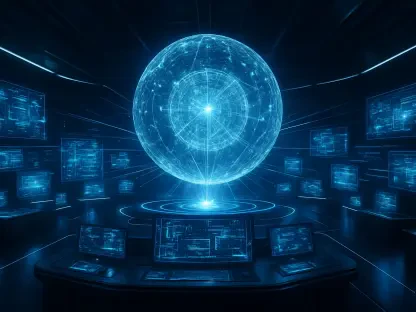The advancement of artificial intelligence has made significant inroads in medicine, particularly in bridging the communication gap between patients and healthcare providers. One of the notable innovations in this field is RadGPT, a large language model developed by Stanford radiologists. RadGPT aims to simplify the often dense and technical language found in radiology reports, making them more accessible and easier to understand for patients. Historically, patients have found it challenging to grasp the complex medical jargon inherent in radiological findings, which often leads to disengagement and uncertainty regarding their health conditions. With AI technologies evolving, RadGPT emerges as a transformative tool that could significantly enhance transparency and patient involvement in healthcare. By providing comprehensible explanations of medical reports, RadGPT holds the potential to empower patients to ask informed questions during consultations and make better decisions about their health, ultimately contributing to improved healthcare outcomes.
Enhancing Patient Understanding Through Simplified Explanations
RadGPT possesses the capability to extract key concepts from radiologists’ reports and translate them into patient-friendly language, a function that aligns with the 21st Century Cures Act’s vision of providing patients with electronic access to their medical records. The Act emphasizes patient rights to understand and engage with their health data, and RadGPT plays a pivotal role in advancing these goals. By simplifying complex information, the tool ensures that patients are not merely passive recipients of their medical data but active participants in their healthcare journey. This advance is particularly crucial in instances where patients need to make rapid, informed decisions or discuss potential treatments with their doctors. Moreover, having a clearer understanding of one’s health condition fosters a sense of ownership and engagement, motivating patients to adhere more closely to treatment plans and engage proactively in discussions about their health. The practical implications of RadGPT are manifold, offering a new avenue for patients to become partners in the decision-making process, thereby enhancing healthcare experiences overall.
Supporting Radiologists and Reducing Cognitive Load
The development of RadGPT also represents a meaningful step towards supporting radiologists by alleviating some of their cognitive burdens. By translating the dense, technical language of radiology reports into layman’s terms, RadGPT serves as an intermediary that benefits both patients and healthcare providers. This tool reduces the additional workload on radiologists, who often face pressure to clarify medical terminology during consultations, allowing them to focus more on diagnostic precision and patient care. With AI streamlining such tasks, radiologists can efficiently allocate their time and cognitive resources, mitigating the risk of burnout—a critical concern in high-stress medical environments. Although RadGPT is not yet designed to interpret raw scans independently, its ability to aid radiologists by breaking down their dictations ensures that patient communication remains clear and comprehensive. As the healthcare sector progressively integrates AI technologies, RadGPT is a pioneering step in utilizing artificial intelligence to facilitate more effective interactions between patients and their doctors.
Ensuring Safety and Accuracy in Patient-Centric Explanations
The implementation of AI in radiology through RadGPT extends beyond simplifying medical language to ensuring the safety and accuracy of the information provided to patients. A conducted study involving 30 sample radiology reports demonstrated RadGPT’s ability to extract five key concepts per report and develop explanations that were then validated by professionals for accuracy. This process ensures that patients receive reliable information that does not require further modification, minimizing the risks associated with misinformation. The safety aspect of RadGPT has been underscored by professionals like Sanna Herwald, who emphasize the model’s reliability in providing non-misleading information. As AI continues to evolve, maintaining strict standards of accuracy and safety remains paramount, especially in critical areas like healthcare where the stakes are high. The promise of RadGPT lies not just in its immediate utility but also in the potential for future enhancements ensuring that as technology advances, it continues to meet the highest standards of patient care.
Future Implications and Broader Trends in Healthcare
Artificial intelligence is rapidly advancing in the medical field, particularly in enhancing communication between patients and healthcare providers. A significant development in this area is RadGPT, crafted by Stanford radiologists. This large language model is designed to demystify the complex and technical language of radiology reports, making them more accessible for patients. Traditionally, patients often struggle with the intricate medical jargon in radiological findings, which can result in confusion and disengagement from their own health concerns. As AI technologies progress, RadGPT emerges as a crucial tool in advancing transparency and patient engagement in healthcare. By providing clear, understandable explanations, RadGPT empowers patients to inquire more actively during doctor consultations and make informed decisions regarding their health. This capability has the potential to significantly enhance healthcare outcomes, providing a path to better-informed choices and improved patient involvement in their treatment processes.









